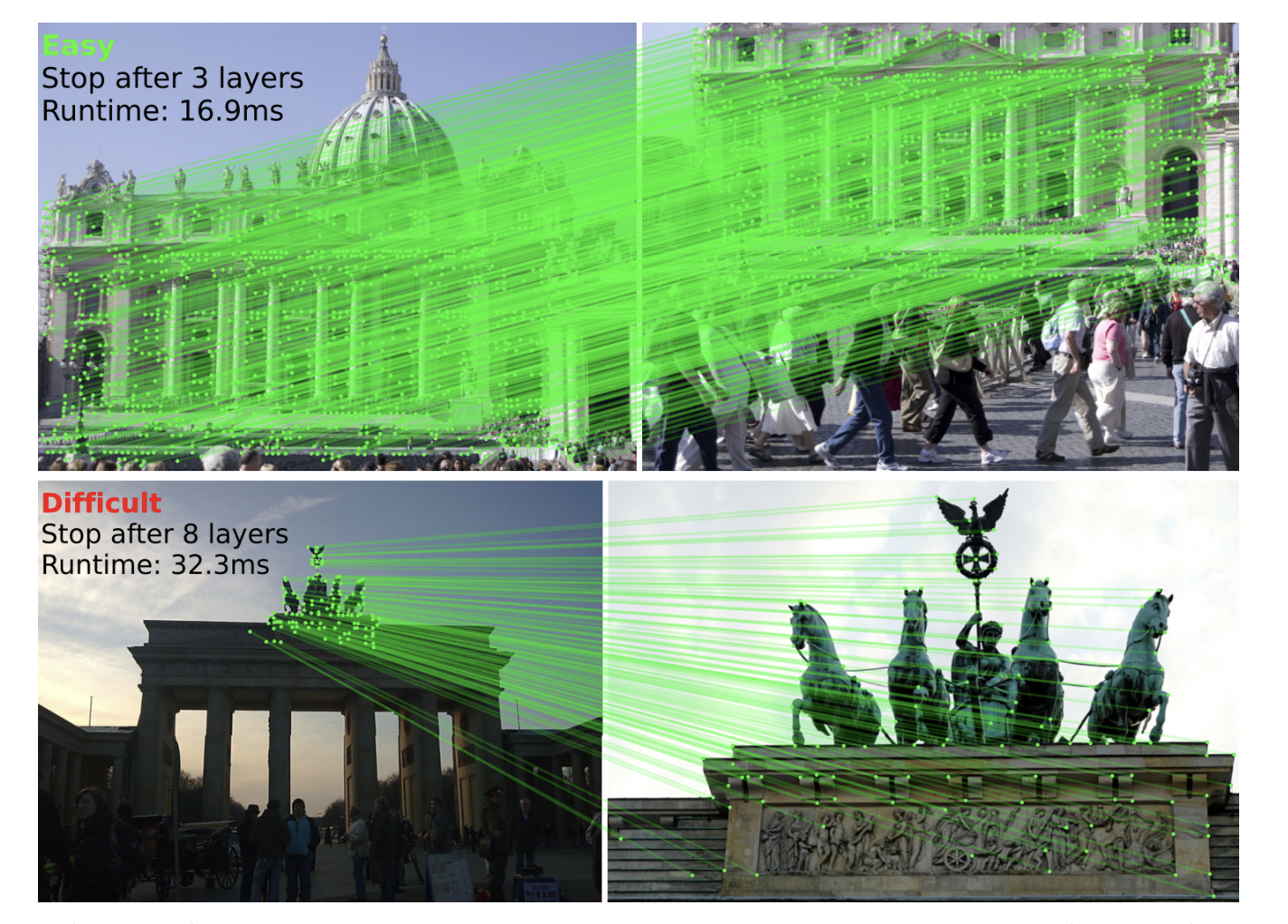
Matching corresponding points between images is critical for many computer vision applications, such as camera tracking and 3D mapping. The conventional approach is to use scattered points of interest and high-dimensional representations to match them based on their visual appearance. However, accurately describing each problem becomes difficult in scenarios with symmetry, weak textures, or variations in viewpoint and lighting. Furthermore, these representations should be able to distinguish outliers caused by occlusion and missing points. Balancing the goals of robustness and uniqueness proves tricky.
To address these limitations, a research team from ETH Zurich and Microsoft has introduced a new paradigm called LightGlue. LightGlue uses a deep network that simultaneously considers both images to match scattered points and reject outliers jointly. The network incorporates the Transformer model, which learns to match challenging image pairs by leveraging large datasets. This approach has demonstrated robust image matching capabilities in indoor and outdoor environments. LightGlue has proven to be highly effective for visual locating in challenging conditions and has shown promise in other tasks including aerial matching, object pose estimation and fish re-identification.
Despite its effectiveness, the original approach, known as SuperGlue, is computationally expensive, making it unsuitable for tasks that require low latency or high throughput. Additionally, training SuperGlue models is notoriously demanding and computationally intensive. As a result, subsequent attempts to improve the SuperGlue model have failed to improve its performance. However, since the publication of SuperGlue, there have been significant advances and applications of Transformer models in speech and vision tasks. In response, the researchers designed LightGlue as a more accurate, efficient, and easier to train alternative to SuperGlue. They re-examined the design choices and introduced several simple but effective architectural changes. By distilling a recipe for training high-performance deep matches with limited resources, the team achieved cutting-edge accuracy in just days of GPU power.
LightGlue offers a Pareto-optimal solution, striking a balance between efficiency and accuracy. Unlike previous approaches, LightGlue adjusts to the difficulty of each pair of images. It predicts matches after each computational block and dynamically determines whether further computation is needed based on confidence. By discarding the matchless spots early on, LightGlue focuses on the area of interest, improving efficiency.
Experimental results demonstrate that LightGlue outperforms existing sparse and dense matches. It is a perfect replacement for SuperGlue, which offers intense matches from local features while significantly reducing execution time. This advancement opens up exciting opportunities for deploying deep matches in latency-sensitive applications, such as simultaneous localization and mapping (SLAM) and the reconstruction of more meaningful scenes from crowdsourced data.
The LightGlue model and training code will be publicly available under a permissive license. This release allows researchers and practitioners to utilize the features of LightGlues and help advance machine vision applications that require efficient and accurate image matching.
Check out thePaperANDCode.Don’t forget to subscribeour 26k+ ML SubReddit,Discord channel,ANDEmail newsletterwhere we share the latest news on AI research, cool AI projects, and more. If you have any questions regarding the above article or if you have missed anything, please do not hesitate to email us atAsif@marktechpost.com
Check out over 800 AI tools in the AI Tools Club
Niharika is a technical consulting intern at Marktechpost. She is a third year student, currently pursuing her B.Tech at Indian Institute of Technology (IIT), Kharagpur. She is a very enthusiastic individual with a keen interest in machine learning, data science and artificial intelligence and an avid reader of the latest developments in these fields.
#Researchers #ETH #Zurich #Microsoft #present #LightGlue #deep #neural #network #learns #match #local #features #images
Image Source : www.marktechpost.com
